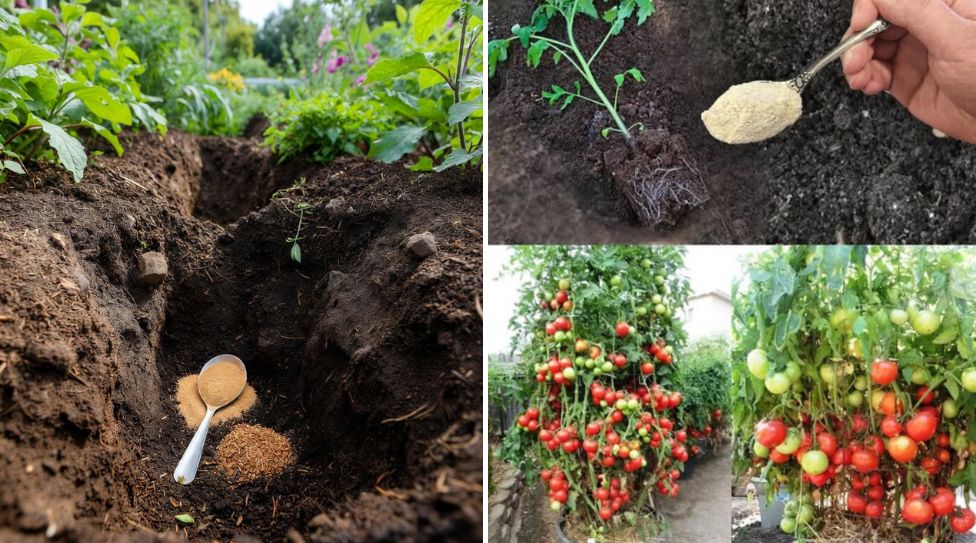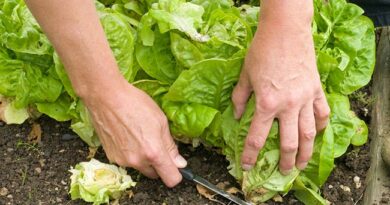What to Put in the Planting Hole for Bigger, Better, More Abundant Harvests
If you’ve ever planted tomatoes or peppers and wondered why some plants explode with fruit while others just kinda… sit there looking confused, the secret is usually in the hole. Seriously. What you throw into that planting hole before the seedling goes in can make or break your entire season.

I didn’t believe this at first. For years, I was the “just dig a hole and hope for the best” gardener. And then one spring, after watching my tomatoes produce exactly three sad fruits, I finally caved and tried the old-school method of “feeding the hole.”
Trust me — I’ll never go back. The difference was wild. My cucumbers grew like they were late for an appointment, and my peppers actually stood upright for once instead of leaning like sleepy toddlers.
So let’s talk about the three small, simple things that turn a basic planting hole into a VIP lounge for your seedlings.
Why This Whole Method Works (In Plain, Human Words)
When you give plants a little gift right where the roots live, a few magical things happen:
- They get a quick snack to settle in (kinda like handing someone a cookie when they just moved in).
- They stay fed for months because these ingredients release nutrients slowly instead of blasting them with fast fertilizer.
- The soil gets fluffier, richer, friendlier — basically “looser jeans” for roots.
- Plants stay stronger against pests and weird summer diseases.
- You get more flowers that actually stay on and turn into fruit, instead of dropping off when the weather acts up.
- And best of all? The harvest doesn’t quit early. You often get tomatoes long after your neighbors’ plants retire.
Okay — let’s dig into the good stuff.
The Three Tiny Ingredients That Change Everything
You don’t need fancy fertilizer. You don’t need magic potions.
You need three grocery-store-level ingredients most people already have in their house.
1. A Little Spoon of Bran
I know — bran sounds like something your grandma sprinkles on yogurt. I thought the same. But in the soil, bran is low-key powerful.
It holds a bundle of minerals (magnesium, zinc, copper, phosphorus — the whole science-class lineup), but the real star is carbon. Plants love carbon. It’s like an early-season pep talk.
When you mix just one small teaspoon of bran into a planting hole, it quietly helps your plant:
- grow roots that grab onto the soil like they’re serious about living
- fight stress from heat or surprise cold snaps
- invite beneficial microorganisms into the soil (like little soil cheerleaders)
- pop out more blooms that actually turn into fruit
- and even taste better — yes, sweeter tomatoes and juicier peppers are a real thing
I once added bran to only one side of my garden as a test, and guess what? The plants on the “bran side” were embarrassingly better. Like, noticeably. My neighbor asked if I was secretly using steroids.
2. Starch — The Strange One That Actually Works
This one surprises everyone. Potato starch or corn starch — the same stuff you use to thicken soup — turns out to be an amazing plant kickstarter.
I know it sounds weird. The first time I used it, I felt like I was cooking inside the garden.
But starch gives plants a slow-release energy dose that helps them “wake up” faster after transplanting.
A teaspoon in each hole does a few great things:
- gives seedlings an early energy boost so they don’t sulk
- helps roots settle in deeply
- keeps flowers from dropping too soon (every pepper grower knows that pain)
- helps cucumbers stay bright green instead of turning yellow on you
It acts like a calm, steady fertilizer — not a big flashy one.
3. Onion Skins — The Most Underrated Garden Treasure
I save onion skins like a dragon saves gold. They’re packed with vitamins, antioxidants, and these natural protective compounds that plants basically treat like armor.
And they break down slowly — which means steady feeding for months.
A small handful in each planting hole:
- strengthens stems so seedlings don’t flop over
- encourages more flower buds
- helps roots stay clean and free of fungal problems
- improves the soil in a long-term way
- and keeps harmful microorganisms from settling in
Plus, onion skins cost… absolutely nothing. They’re literally trash that turns into treasure.
How To Actually Use All This in the Planting Hole

Here’s how I do it every spring:
- Dig a hole the way you normally would — deep enough for the seedling’s roots.
- Drop in:
- 1 teaspoon of bran
- 1 teaspoon of starch
- A handful of onion skins
- Mix it lightly with the loose soil at the bottom. (Don’t let the roots sit directly on the ingredients.)
- Place your seedling in.
- Backfill.
- Water well so everything wakes up and starts breaking down.
Your plants will settle in faster than usual — you’ll see it.
Extra Tips That Make This Even Better
These are the little things I’ve learned from messing up a few times:
- Don’t overdo ingredients — more is not better here.
- Onion skins store forever — keep a jar in your kitchen for spring.
- Heavy feeders (like tomatoes and peppers) love this mix paired with compost.
- If you rotate crops, swap bran with compost one year and alternate — it keeps soil balanced.
- And please — don’t pack the hole with too much organic stuff. You want a boost, not a buffet.
What You Can Expect if You Try This
Gardeners who use this method usually notice the same things I did:
- seedlings perk up within days
- more flowers stay on instead of dropping
- bigger yields, sometimes double
- fruiting lasts longer into fall
- fewer diseases — especially blight, mildew, and rot
- and by the end of the season, your soil is softer and richer than before
All of this… from stuff you already have at home.
Sometimes gardening really is that simple. Simple ingredients, small steps, big rewards.



